While many of us can swim, some elite swimmers take swimming one step farther. Swimming is popular and low impact, making it a sport that athletes of all ages can enjoy. We'd like to acknowledge those who take the sport of swimming to an entirely new level, going beyond the pool in some cases, are the long-distance marathon swimmers. So, we've researched famous distance swimmers for you to celebrate their achievements.
Long-distance marathon swimming is an endurance-based sport that can take place in either pool or natural, open water. Marathon swimming in Olympics competitions requires a minimum distance of 10km to be completed. Still, open water swimming events can exceed that distance by tremendous sums, sometimes even by hundreds of kilometers. The 10 records and famous swimmers below are among a limited few that have carried out distance/marathon swims in an open water environment:
- Sarah Thomas
- Chloe McCardel
- Caroline Block
- Veljko Rogosic
- Ricardo Hoffman
- Feras Moulala
- Jon Erikson
- Philip Rush
- Alison Streeter
- Diana Nyad
If ultra-marathon or long-distance swimming has piqued your interest, you might be curious as to what steps you will have to take to make it part of your routine. You will likely want to know if you can adhere to the training programming to meet the pre-requisites to succeed in distance swimming. Below we have looked into the details of long-distance swimming and the pertinent questions to consider along the way.
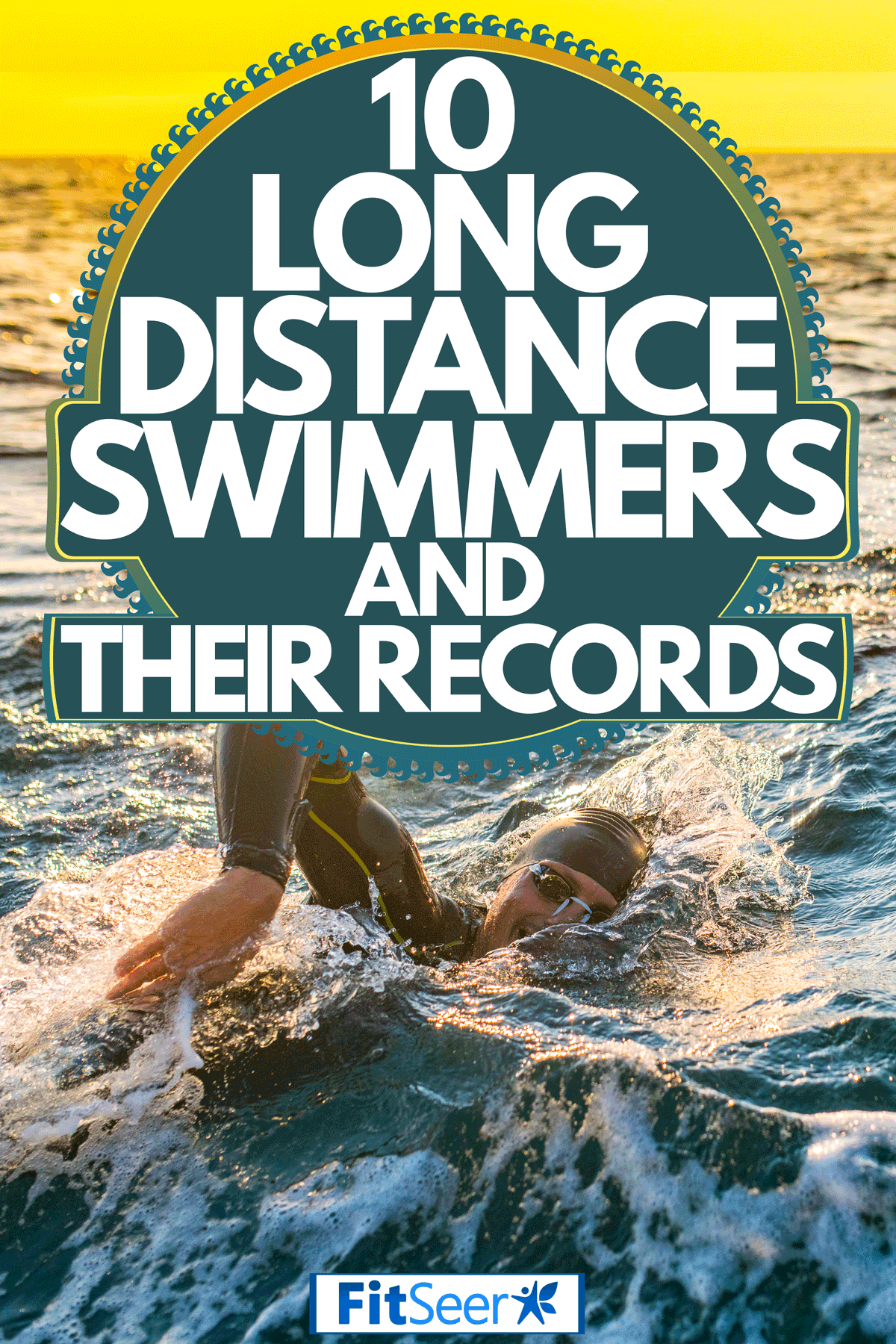
Long Distance Swimmers And Their Records
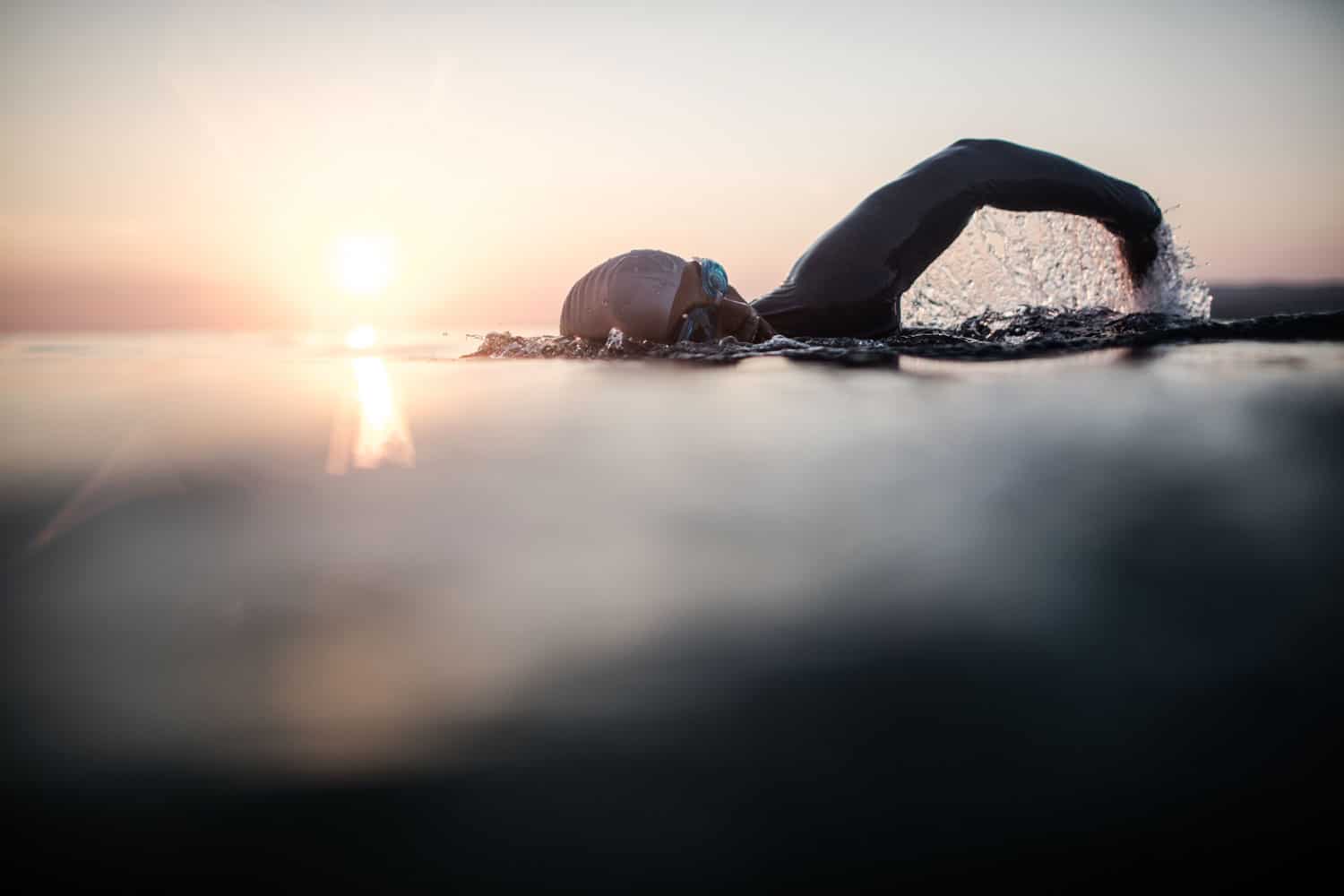
Long-distance swimming is a true endurance sport, and the athletes who participate are among the world's best. These swimmers come from all corners of the globe and perform their swims in various formats, usually in an open water setting or in a pool. Below we have provided 10 Open Water Records and highlight the athletes who currently hold them. Without a doubt, these elite swimmers have dedicated themselves wholeheartedly to the pursuit of long-distance swim status and should receive their hard-earned recognition.
1. Sarah Thomas
- Location of the Swim: Lake Champlain
- Date of Completion: 08/10/2017
- Distance of the Swim: 168.3 km (104.6 miles)
- Duration of the Swim: 67:16
- Swim Format: Open Water Continuous Lake Swim
2. Chloe McCardel
- Location of the Swim: Exuma Sound
- Date of Completion:-10/22/2014
- Distance of the Swim: 124.4 km (77.3 miles)
- Duration of the Swim: 41:21
- Swim Format: Open Water Continuous Ocean Swim
3. Caroline Block
- Location of the Swim: Lake George
- Date of Completion: 09/18/2020
- Distance of the Swim: 103.6 km (64.4 miles)
- Duration of the Swim: 52:24
- Swim Format: Open Water Multi-Segment Lake Swim
4. Veljko Rogosic
- Location of the Swim: Adriatic Sea
- Date of Completion: 08/31/2006
- Distance of the Swim: 194 km (120.5 miles)
- Duration of the Swim: 50:10
- Swim Format: Open Water Open Current Ocean Swim
5. Ricardo Hoffman
- Location of the Swim: Parana River
- Date of Completion: 03/06/1981
- Distance of the Swim: 481 km (299 miles)
- Duration of the Swim: 84:37
- Swim Format: Open Water Continuous River Swim
6. Feras Moulala
- Location of the Swim: Mediterranean Sea
- Date of Completion: 09/21/2007
- Distance of the Swim: 106 km
- Duration of the Swim: 41:45
- Swim Format: Open Water Continuous Ocean Swim
7. Jon Erikson
- Location of the Swim: English Channel
- Date of Completion: 08/11/1981
- Distance of the Swim: 99 km
- Duration of the Swim: 38:27
- Swim Format: Open Water Multi-Segment Ocean Swim
8. Philip Rush
- Location of the Swim: English Channel
- Date of Completion: 08/16/1987
- Distance of the Swim: 99 km
- Duration of the Swim: 28:21
- Swim Format: Open Water Multi-Segment Ocean Swim
9. Alison Streeter
- Location of the Swim: English Channel
- Date of Completion: 08/02/1990
- Distance of the Swim: 99 km
- Duration of the Swim: 34:40
- Swim Format: Open Water Multi-Segment Ocean Swim
10. Diana Nyad
- Location of the Swim: Atlantic Ocean
- Date of Completion: 08/20/1979
- Distance of the Swim: 145 km
- Duration of the Swim 27:41
- Swim Format: Open Water Current Aided Ocean Swim
Is Long Distance Swiming Good For You?
Swimming is one of the best forms of training you can engage in. When swimming, almost every muscle in the body is activated, providing a comprehensive full-body workout with unparalleled health benefits. In fact, regular swimming training will have you see noticeable increases in muscle strength and cardiovascular health, contributing to your overall wellness.
It should be noted that while adding in the extra distance to your swims should not be harmful, caution needs to be exercised not to overload yourself. All programming or training, swimming or otherwise, should be worked up with a mindset to improve your tolerances gradually. Your body should always be given ample time to adjust to the new or unfamiliar strains. You don't want to shock your system in a bad way.
Swimming In Open Water
Click here to see more products like this at Amazon.
If there are questions or concerns about introducing new activity into your lifestyle, you should always attempt to seek out and defer to the expertise of your doctor with questions of ability and capacity to engage in endurance sports. With medical support and coaching staff's aid, programs can be designed to minimize the risk of injury and provide the greatest results.
How Far Do Olympic Distance Swimmers Train?

To attain Olympic/Elite endurance levels, particularly for ultra-marathon swimming, dedication is required. The physical action of swimming is only a single component in a much larger and more complex process. In reality, the overall training becomes a 180-degree lifestyle adjustment, balancing swimming, weight training, nutrition, and mental fitness/conditioning. To safely execute these swims, you must be clear and focused both inside and outside of the water.
Swimming
Stroke drills, underwater breath control, core endurance, and laps upon laps should all be expected as part of your daily routine. Olympic level swimmers will swim anywhere from 10 to 20 miles per day, with their workouts spaced throughout the day to allow for recovery and nutrition breaks. A strenuous workout schedule typically requires early mornings and late evenings in the pool, always accounting for rest and recovery to maximize performance. The swimming techniques are perfected during this section of the training blocks.
Weight Training
Cross-training with weights is another critical component of swimming. This bodywork is essential in targeting swim-specific muscle groups, training your body to engage swim muscles more frequently. Other sports activities may be integrated into a plan in lieu of weight training.
Nutrition
Managing your meals and nutrition is paramount to the success of a training program. Your ability as a swimmer to train well and properly requires consistent caloric intakes to fuel your body. Lots of protein and carbohydrates help with muscle tissue recovery and maintaining glycogen stores that will inevitably be burned. The specifics of nutrition (or tracking macros) will adjust throughout a training cycle, especially during competitive training.
Mental Fitness/Conditioning
As we train our bodies, we should strive to achieve a greater acuity and mental sharpness. There are many resources available to coach mental strategies. Below is an example of available material that will help promote the mindset and develop habits in sync with your pursuing training.
Elite Swimming Programming
Click here to see more products like this at Amazon.
Is Open Water Swimming Harder Than In A Pool?
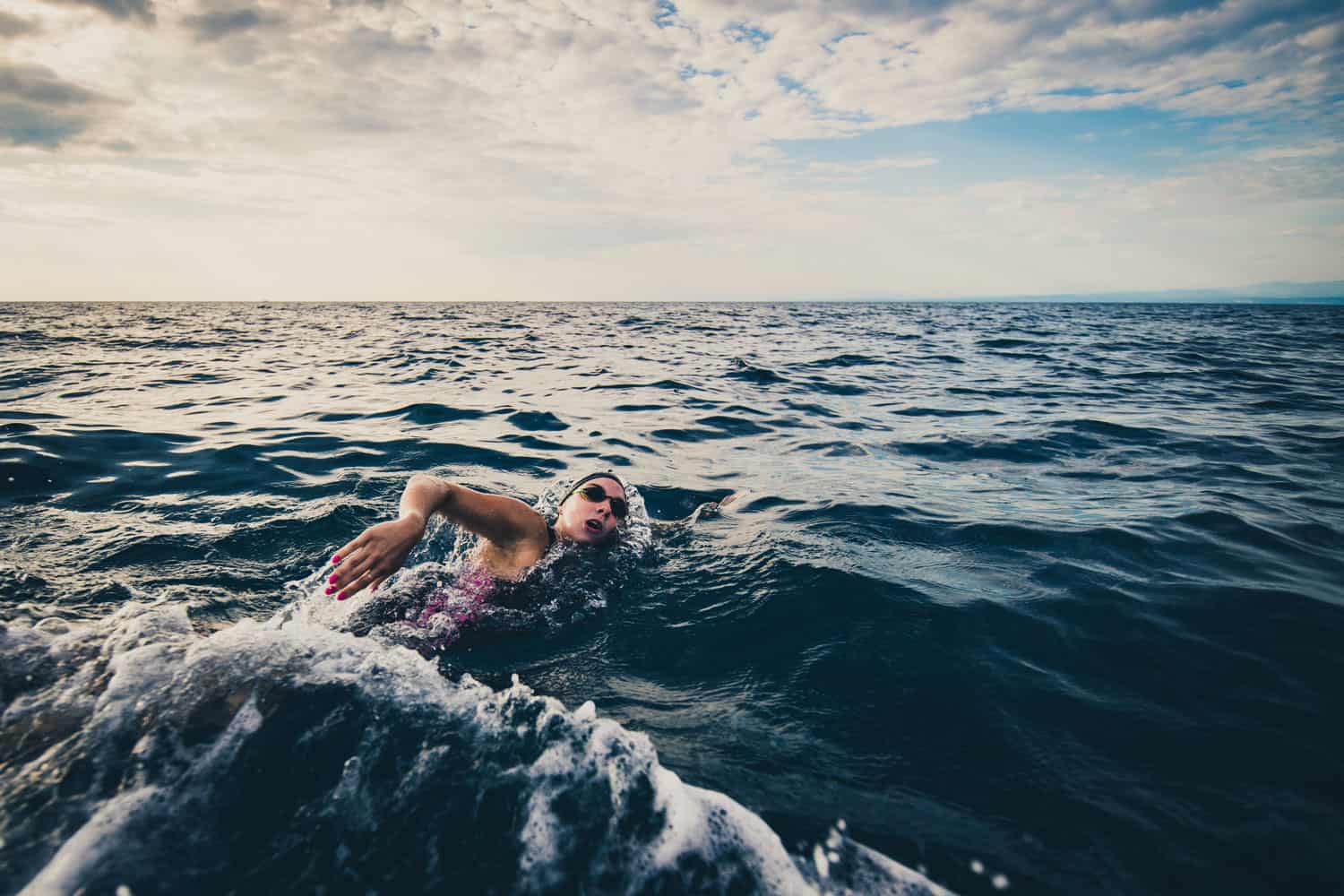
The old phrase, "different strokes for different folks," aptly captures this swim debate. Each swim style presents its own challenges, so while we cannot say which is more difficult, we can say it depends on each swimmer. What are the primary differences between the two swimming environments? We have provided a list of considerations below from which you can make your own informed decision on the difficulty level between open water and pool swims.
Water/Air Temperature
When swimming in a pool, the water temperature is regulated, which usually permits the ideal swimming conditions. Open water swims are subject to seasonal temperature changes in your region. The colder the water, the harder your body has to work to meet the demands being expected of it.
Training Obstacles
Distance perspective and flow resistance are arguably the two dominating training obstacles found in open water and pool swimming. Open water typically presents rougher swimming conditions, introducing the likes of currents and waves into the mix. This certainly adds a degree of difficulty requiring further physical effort than required for calm, glassy pool environments. However, many pool swimmer's strokes and rhythms are dealt a hefty blow as the sidewalls can impact swimmer form.
Nutritional Requirements For Marathon Swimmers
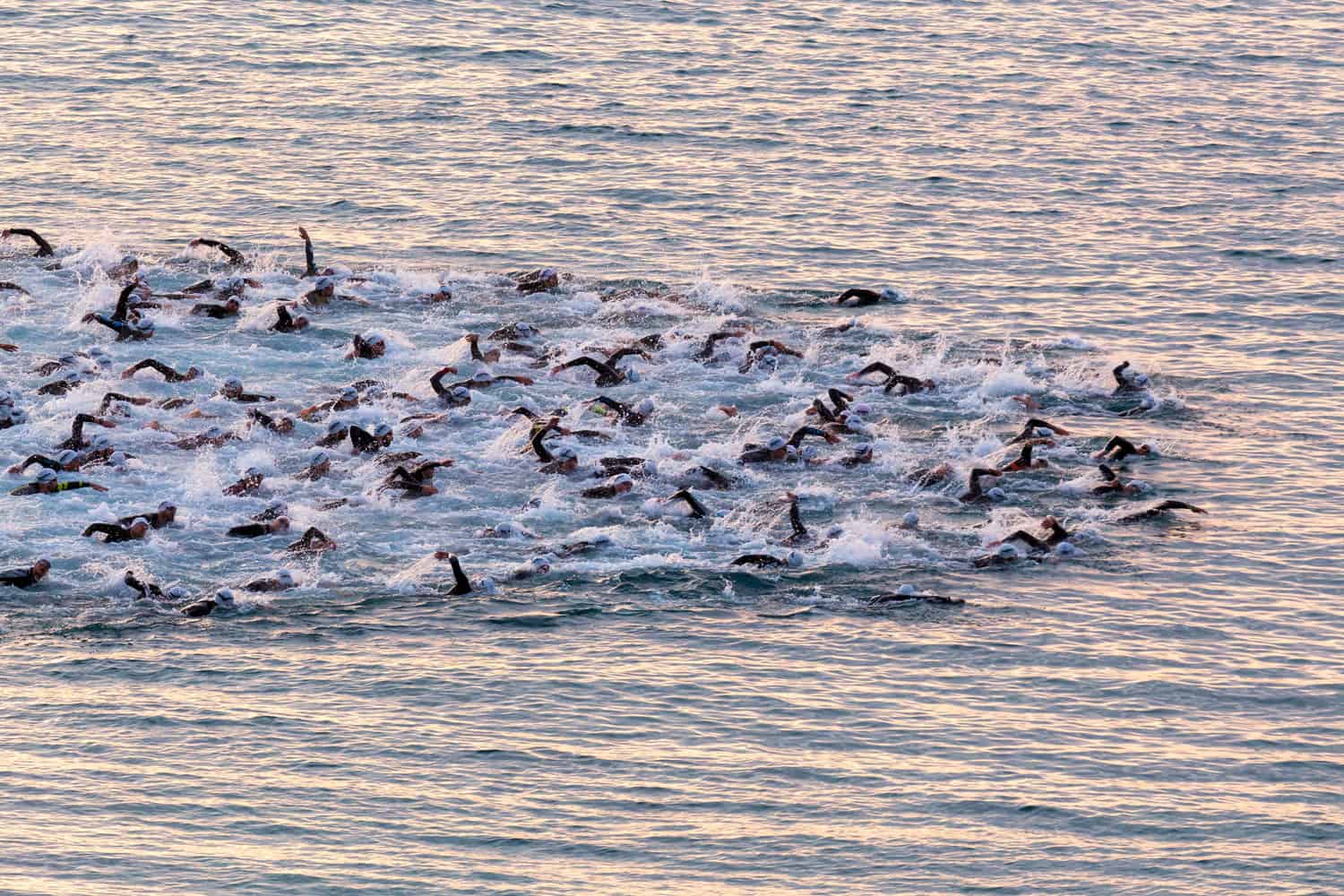
Calculating nutritional needs for an athlete requires a lot of information and data. Calorically, food is little more than fuel, but fuel is necessary to our bodies' better functioning. The appropriate quantities and the quality of nutrients are important, but because of people's unique body makeups and unique training requirements, there is no exact target figure to provide.
Athletes can consume upwards of 10,000 calories a day at the elite swimming levels, but that fluctuates based on your own vital statistics. Protein and carbohydrates help with muscle tissue recovery and maintaining glycogen stores that will inevitably be burned for long swims.
How Do Marathon Swimmers Eat?
The ability to maintain nutrition during arduous marathon swims is a skill that newbies and veterans quickly learn. How do they accomplish this task? Eating while swimming and treading water! While it is an acquired skill that takes some adjusting to, it can also be very personal in that each swimmer will ultimately decide what and how they want to eat. Any food can be theoretically eaten, but you will learn what works and doesn't work best for you with trial and error.
Popular quick bites swimmers use are:
- Protein/Energy Bars
- Energy/Electrolyte Chews
- Bananas
- Chocolate or Candies
- Canned Fruits
- Supplement Drinks
In Closing
If the impressive feats of the ultra-marathon swimmers have inspired you to test the waters, always be sure to go in well prepared with your best foot forward. Do your research, follow a program and consult an expert if you feel out of your depth. Even though long-distance swimming is a challenge, it's well within your power to succeed and meet the challenge.
For more famous fitness lists, advice, and recommendations, visit Fitseer.com and check out our related posts:



![Read more about the article Can Football End In A Tie? [Here’s When This Can Happen]](https://fitseer.com/wp-content/uploads/2020/10/Quarterbacks-in-position-getting-ready-to-play-football-500x333.jpg)


![Read more about the article 12 Types Of Football Helmets [And Which One To Choose]](https://fitseer.com/wp-content/uploads/2021/09/An-unrecognizable-football-player-wearing-a-black-helmet-500x333.jpg)
![Read more about the article How To Hike Without Getting Tired [7 Crucial Tips!]](https://fitseer.com/wp-content/uploads/2020/09/Hiker-woman-with-trekking-sticks-climbs-steep-on-mountain-trail-focus-on-boot-500x333.jpg)
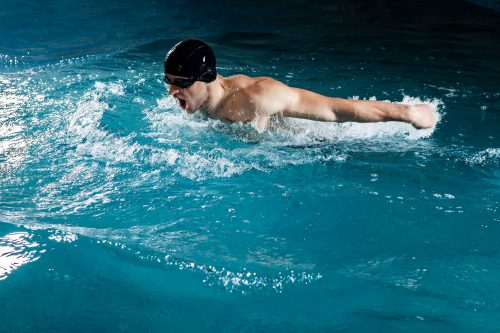
This article needs an EDIT:
The longest continuous, unassisted, current-neutral swim along a single-segment natural route in an ocean, sea or bay, which was set at 124.4km has just ben broken by Maltese Athlete Neil Agius.
The new record set at 125.6 km was from Linosa, Italy to Gozo, Malta and completed in just over 52 hours !!